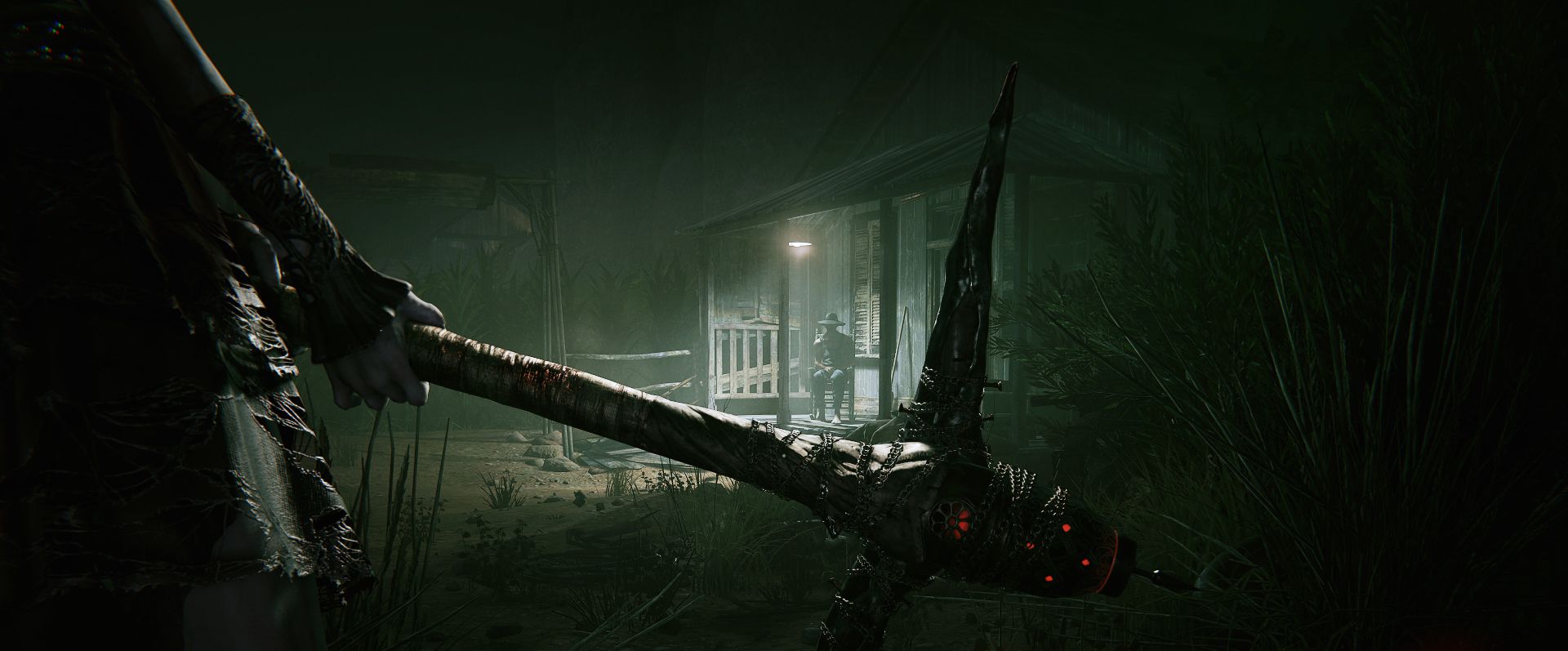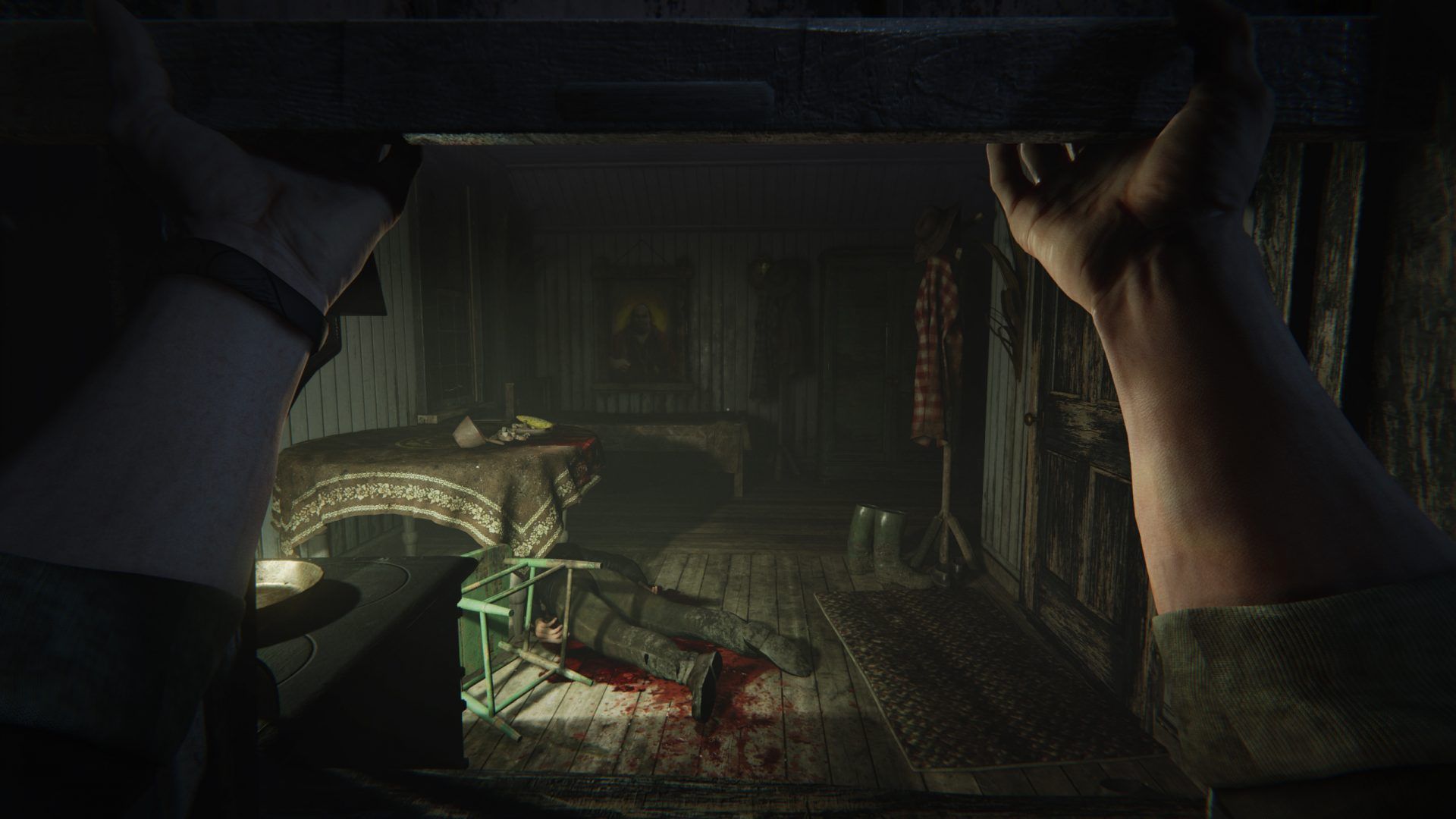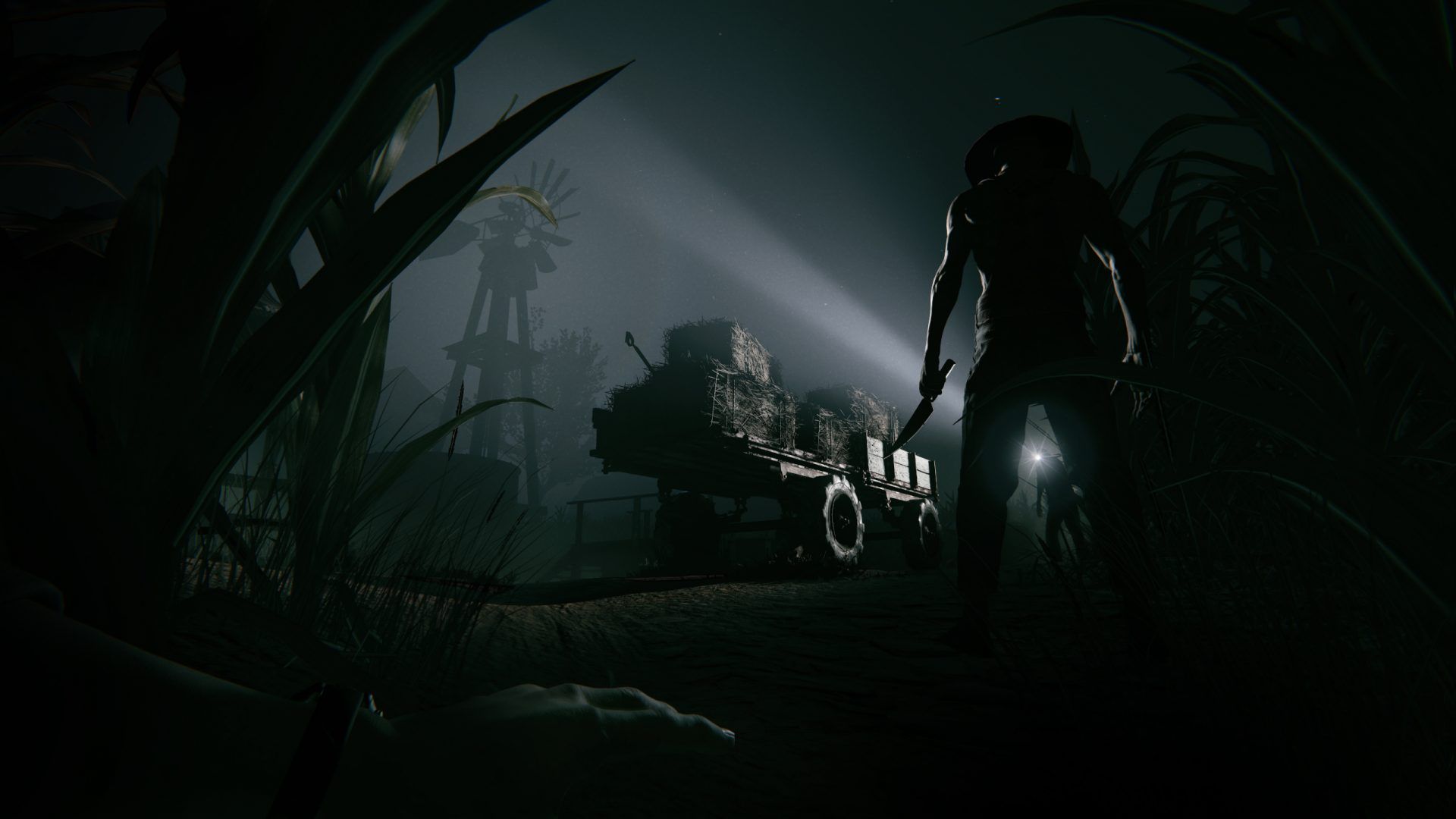"I like messed up shit," I joke to one of the members of the development team behind Outlast 2, the sequel to 2013's [2014 on consoles] acclaimed, first-person survival-horror, following my rather pleasing trip into the World of investigative journalist Blake Landermann. On a, perhaps not so pleasant evening. A casual chuckle between the folks at Red Barrel and several surprising deliveries in-game prior, I didn't know what to expect coming into the follow-up to one of the more surprising horror offerings in recent years. Be it the attention to atmosphere, the loose self-investigative narrative or the unique use of a video camera -- often your go-to default perspective; both a screen-within-a-screen delivery as well as a clear harkening to shaky-camera flicks stemming in and out of the horror leaning -- it was clear those core themes and mechanics would remain. But as far as actual story, and to up the scare-factor even more, my play-through was almost as blind as the very character I was thrust into the shoes of.
The game makes it clear from the get-go your character's short-sightedness (of which is reiterated a couple more times later on) is something that just might instil the kind of internal, ready-made fear that comes with not knowing what may or may not be directly in front of you. I'm in a good position that I don't share the same degree of fear (at least not yet anyway), but even from the first few seconds, it's clear Outlast 2's overall direction -- when looking at it purely from a delivery stand-point -- may well just be that bit more psychological. Less about the gore and monstrosity lurking nearby, but more on the absolute fear and anxiety of thinking some unimaginable monstrosity may just be lurking nearby. An endlessly vicious circle of dread and human imagination.
Of course, the trustee handheld camera makes its return to frame your journey, as does the ability to use the device's night-vision to slowly wade through the pitch black of your surroundings, at the cost of battery power. Like Outlast before it, it boils down to conserving the bare minimal of resources to survey and investigate sure, but above all else, survive the madness slowly unfolding. From here, the game makes the regular round of checking off necessary ingredients like it's ready to serve up the starter to some three-course dinner on horrific delights. You have your barren, seemingly-abandoned buildings; the creaking, mouldy aesthetic underpinning it; the uncertain placement of nearby noises that may or may not be animately-associated. Essentially what you would expect from any horror set-up involving distant locales with a not-so-distant ambience of the unsettling variety.
Yet for all this rudimentary scene-setting, there's no greater horror than the unknown. Particularly when said unknown has you question just what the hell is actually going on. Better/worse, when you know the only way to find out is to sink ever deeper into the psychotic madness forever seducing you in. From here, Outlast 2 takes a surprising shift in both its design and its progression by flinging you between contrasting settings. Be it derelict housing, an elementary school of sorts and a corn field with no blatant entry/exit, the game appears to take a more psychological leaning than its predecessor.
Distant laughing, doors leading and subsequently disappearing the moment you step through, a complete lack of spatial direction, while it's the zealously religious tones that may prove to be what paints the physical horrors on show (there is an upside-down cross in the logo after all), it's the way Outlast continues to lull you into a false state of acceptance and understanding, only to push you -- like at the edge of a swimming pool -- straight back into this panic-inducing desperation to escape, that works a lot better than throwing up all the blood and gore a mentally-deprived meat-eater can shunt. The latter period of carefully sneaking one's way through crop fields in hopes of avoiding eye contact with said religious nut-jobs was a key highlight and while hiding spots were on standby for use, it seemed to me the game was carefully (and structured rather well) in a way to suggest moving is as much a tactic to throw as playing it static, trying to wait it out.
We know little of the horror ravishing this [perhaps] once peaceful little settlement in rural America, nor do we know any more as to the identity of the occasional monstrosities that try their best to land a jump-scare on you (when they're not ramming sharp weaponry into your crotch), but any game that treats build-up with more respect than a cheaply put-together carnival ride, is definitely one to admire. It may not be the best horror title I played on the show-floor, but Outlast 2 clearly wants to build on its original, evidently successful, philosophy that horror is what we perceive it as and I'm pleased to see Red Barrel aren't simply doing more of the same. Of course, frantically conserving every drop of battery will be there every step of the way, but this supposedly internal trip into mentally-shaken territory is one I will be very anxious -- though happily interested -- to explore.



